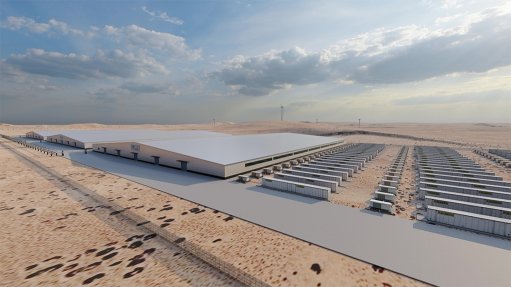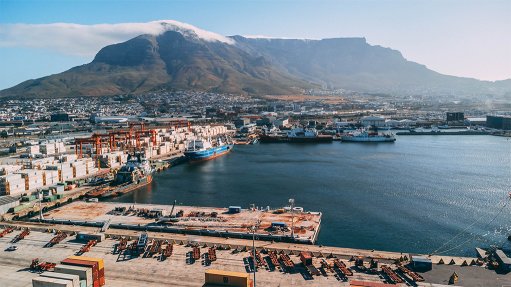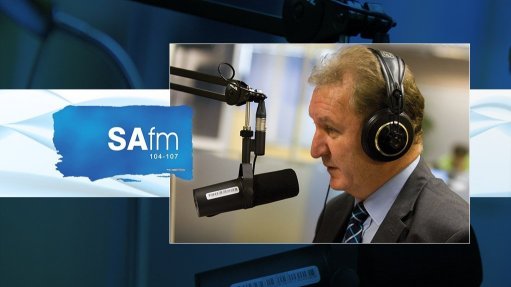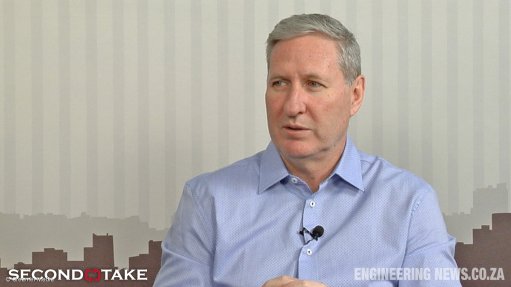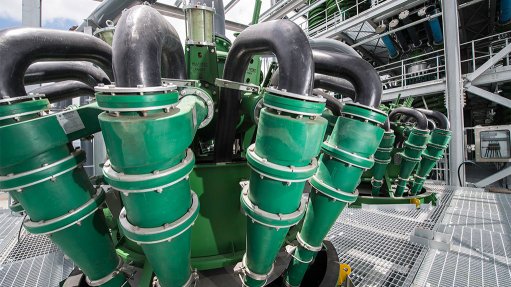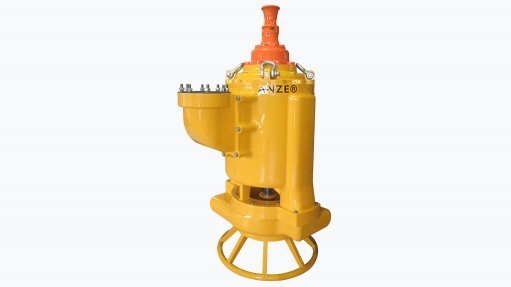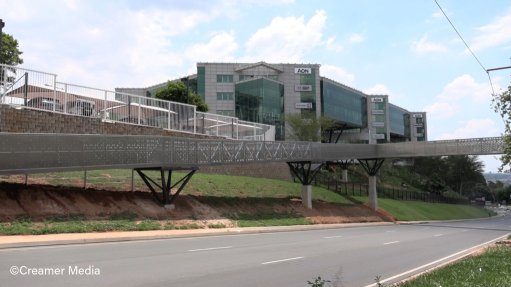Green covers optimal for tailings storage facilities

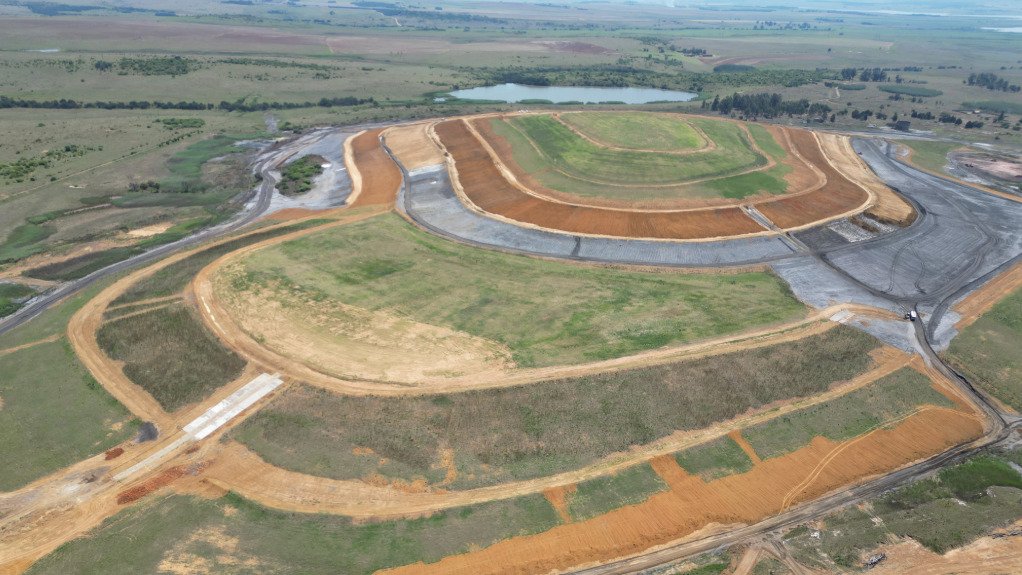
COVERING ALL BASES The geomorphic design of a tailings facility shapes the facility into the form of nature it will eventually erode it into
Research across various mine closure projects has found that a well-designed green covering system, deployed through specialist engineering and ecological design principles, has demonstrated the “greatest long-term durability and environmental sustainability” for the local climate, says mine closure services provider Agreenco CEO Fanus van Wyk.
Although there are numerous cover system options available for South Africa’s many tailings storage facilities (TFSs), “green covers” or revegetated store-and-release systems, often in combination with other cover materials, present cost-effective and long-term surface stability for these anthropogenic landscapes.
The primary function of green covers is to control water infiltration and oxygen ingress, thereby reducing contaminant leaching and long-term geochemical risks.
In doing so, he says the cover also stabilises the tailings surface and mitigates environmental impacts such as wind and water erosion, dust generation and surface instability.
Green covers balance water infiltration, and the visual outcome also blends with the environment, says Van Wyk, adding that a green cover is ideal for arid and semi-arid climates, such as those present in Southern Africa.
While green covers, when scientifically implemented, generally have a moderate initial capital expenditure, they also have a lower long-term maintenance cost compared with alternative systems, he says.
According to Agreenco director and land rehabilitation specialist Adrian Haagner, long-term cover efficiency depends on scientific alignment between the tailings substrate, landform geometry and cover materials, ensuring a growth medium that can naturally sustain vegetation through nutrient and moisture cycling.
These recreated ecosystems are, however, “extremely fragile” to land use, he adds.
Therefore, incorporating the slopes of these land types into commercially viable land-use models is highly unlikely from a land-use potential, biomass productivity, forage quality and environmental health point of view, whereas the top surface areas or “beach areas” offer more options.
Green cover landforms offer the potential for ecological reintegration, supporting biodiversity. Over the long term, securing surface integrity and environmental protection should be the main aim of this cover type.
TSF Covering Options
Beyond vegetated systems, Van Wyk states that several alternative cover designs are used to stabilise tailings facilities under varying climatic and material conditions.
Other alternatives include grey covers – rock or top-layer covers typically involving higher initial costs compared to green covers, but with lower anticipated maintenance required, making them a durable choice for long-term erosion control.
Here, coarse rock or aggregate is used to reduce infiltration and prevent erosion, offering effective physical protection.
If the materials are available and rehabilitation budgets allow, grey covers are ideal for arid and semi-arid regions where surface durability and low vegetation maintenance are preferred, adds Van Wyk.
“Planning for sufficient rock volume and transportation distance is however essential for [the] viability of this solution,” he says.
Alternatively, brown covers – layers of soil – bear moderate initial costs, but potentially more intensive long-term maintenance requirements, especially when exposed to erosion, as this solution lacks vegetation, says Van Wyk.
These covers rely on compacted soil barriers to limit infiltration, providing short- to medium-term seepage control.
However, under arid conditions, cracking and erosion may challenge the performance of a brown cover, he notes.
If placed on suitable geometries and with stable materials, vegetation can offer additional surface protection for a brown cover, provided it can establish naturally, elaborates Van Wyk.
Morphing the Ground
Geomorphic design reimagines TSFs as extensions of the surrounding terrain rather than engineered anomalies. This essentially shapes the facility into the form of nature it will eventually erode it into, explains Agreenco affiliate GreenGAB director and environmental engineer Anthin Botes.
Geomorphic surface shaping establishes natural drainage pathways that direct water away from erosion-prone zones.
“The main benefit of geomorphic design over traditional engineering for tailings management is its ability to work with natural processes, by replicating natural slope profiles, concave/convex transitions and drainage hierarchies,” he says.
These landforms also blend visually into the environment, aiding habitat restoration.
Botes stresses that, for new tailings projects, early planning with closure in mind from the outset is crucial for successful geomorphic integration, as retrofitting existing dams using this approach is more challenging, expensive and complex.
Nonetheless, existing TSFs can be redesigned to align with geomorphic features, though it may involve higher initial costs.
Article Enquiry
Email Article
Save Article
Feedback
To advertise email advertising@creamermedia.co.za or click here
Comments
Press Office
Announcements
What's On
Subscribe to improve your user experience...
Option 1 (equivalent of R125 a month):
Receive a weekly copy of Creamer Media's Engineering News & Mining Weekly magazine
(print copy for those in South Africa and e-magazine for those outside of South Africa)
Receive daily email newsletters
Access to full search results
Access archive of magazine back copies
Access to Projects in Progress
Access to ONE Research Report of your choice in PDF format
Option 2 (equivalent of R375 a month):
All benefits from Option 1
PLUS
Access to Creamer Media's Research Channel Africa for ALL Research Reports, in PDF format, on various industrial and mining sectors
including Electricity; Water; Energy Transition; Hydrogen; Roads, Rail and Ports; Coal; Gold; Platinum; Battery Metals; etc.
Already a subscriber?
Forgotten your password?
Receive weekly copy of Creamer Media's Engineering News & Mining Weekly magazine (print copy for those in South Africa and e-magazine for those outside of South Africa)
➕
Recieve daily email newsletters
➕
Access to full search results
➕
Access archive of magazine back copies
➕
Access to Projects in Progress
➕
Access to ONE Research Report of your choice in PDF format
RESEARCH CHANNEL AFRICA
R4500 (equivalent of R375 a month)
SUBSCRIBEAll benefits from Option 1
➕
Access to Creamer Media's Research Channel Africa for ALL Research Reports on various industrial and mining sectors, in PDF format, including on:
Electricity
➕
Water
➕
Energy Transition
➕
Hydrogen
➕
Roads, Rail and Ports
➕
Coal
➕
Gold
➕
Platinum
➕
Battery Metals
➕
etc.
Receive all benefits from Option 1 or Option 2 delivered to numerous people at your company
➕
Multiple User names and Passwords for simultaneous log-ins
➕
Intranet integration access to all in your organisation







